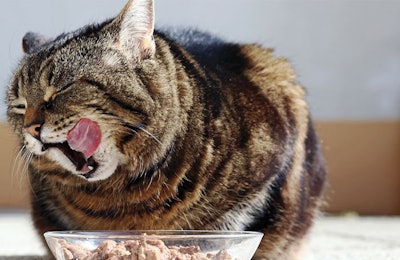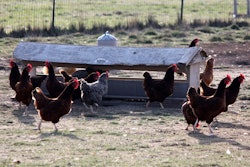
Is dry pet food’s decades-long dominance on the wane? The popular, convenient product format is not going away anytime soon, but it’s taking on challengers, particularly wet pet food.
In the U.S., dry pet food still enjoys a 60% market share, according to Packaged Facts’ latest report, “U.S. Pet Market Update: Pet Food Focus, 2021.” Yet wet pet food now accounts for 36% of the market, and a breakdown of usage rates among U.S. pet-owning households highlights the rise of that format, most notably among cat owners.
Wet cat foods and treats on the march
Packaged Facts has tracked usage data for dry dog and cat food, as well as wet dog and cat food, since 2006. In a period spanning 2020-21, use of wet dog food inched up to 38.4% of dog-owning households, from 34.3% in 2006-2007. The percentage of dog owners feeding both types of dog food has increased more, from 37% in 2006-07 to 44% in 2020-21. Note that 94% of dog-owning households still feed dry dog food; that rate has remained steady since 2006-07, as has the one for dog biscuits/treats at about 77%.
For cats, feeding of dry cat food is also very high and fairly steady, at 93%, yet the usage rate of wet cat food has risen from 49% in 2006-07 to 59% in 2020-21. “As of 2020-21, in keeping with the increased popularity of wet cat food, 58% of dry cat food purchasers also buy wet cat food, up from 50% in 2006-07,” the Packaged Facts report says.
Treats are another area of significant growth for cats, increasing from 39% in 2006-07 to 60% in 2020-21, which Packaged Facts attributes in part to pet pampering trends, both before and since the COVID-19 pandemic hit. In addition, cats seem to be getting more product development attention from pet food brands seeing the growth potential in a previously underserved category.
Premiumization is key, too, with Packaged Facts projecting that “cat food sales will increasingly benefit from the premiumization trend, edging up slightly in share of pet food sales.” As of 2021, cat food overall has a 34% share of the U.S. pet food market.
Semi-moist pet food, whether for dogs or cats, accounts for only 1% of the U.S. market.
Fresh pet food still only small part of the market
If you’re wondering about newer, less traditional pet food formats, which have seen large growth spurts in recent years, they still capture only a very small share of the market. According to the Packaged Facts data, fresh pet food—meaning refrigerated or frozen—is only at 4%, and that’s nearly all on the dog food side. However, the report says the “dog-centric” success of fresh pet food brands is likely to lead to more product development for cats, too. (The report apparently does not include freeze-dried or dehydrated pet food.)
We have to remember that, even with brands like Freshpet being on the market for more than 10 years, these formats started from zero only recently, relative to the established, traditional product types. And while dry pet food usage rates have remained stagnant, it takes a while to chip away at levels over 90%. Continuing innovation (for example, Mars recently launched a refrigerated line of dog food into Walmart under its Cesar brand) and appeal to the growing contingent of consumers seeking fresher, less processed products, including for their pets, will no doubt lead to increasing market share and sales for the newer formats; but it’s not due to happen overnight.
If anything, wet pet food seems more destined to grab market share away from dry.
Twitter

















